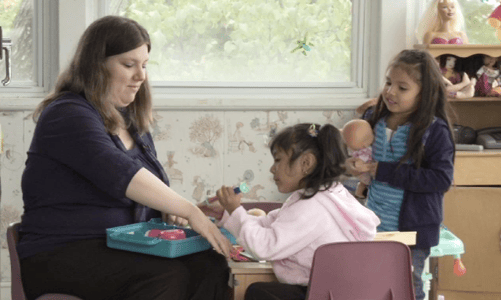
During the dimension discussion of Instructional Learning Formats in a CLASS Observation Training, I often find myself needing to clarify the difference between the indicators of Effective Facilitation and Clarity of Learning Objectives. My participants have pointed out that both indicators talk about the teacher asking questions, and if the teacher is effective, shouldn’t learning objectives then be obvious?
Let’s start with the Effective Facilitation indicator
When I think about what effective facilitation may look like during an observation, I tell participants to envision a teacher who is walking around the room, talking with and to the children about what they are doing. The teacher may join the students at the manipulative math area, and work alongside them; she is asking questions and making comments about their work. She might pause in the art area and make comments about the colors the children are using, and ask them about their pictures. All the while, she balances her involvement with the children’s exploration. Because of these interactions, the student’s involvement in the activity is enhanced, and they are more involved in the activities.
Now let's talk about Clarity of Learning Objectives
Okay--think about the teacher being more intentional here. She is much more focused on a learning objective. This indicator measures whether or not there is a clear point to the activity at hand. Take a step back here, and ask yourself, “Is it obvious to me what the goal of this activity is?” To decide, listen for the teacher to ask questions, or make comments that are clear, and targeted on the learning objective at hand. She may make an outright statement, such as “We are going to use the scale to decide which items are the heaviest.” The students may give us that evidence as well, by, for instance, manipulating the scales and making comments about the heavy and light items.
Can a teacher be effective in facilitation, but not as clear about learning objectives?
Yes! The teacher could be actively facilitating a variety of activities or lessons around the classroom that encourage the students to remain engaged in activities, but she may be less focused on any particular learning objective. Think about the exemplar video “Maximizing Children’s Engagement in Centers.” This teacher is joining in the play at hand in the house area, as two children pretend to be doctors and dress a doll. The teacher asks questions, keeps them involved in the play at hand, and even expands what could have been limited play. But we don’t have any indication that there is a point or learning objective within that play.
I hope this helps you as you support the participants understanding of the indicators within the Instructional Learning Formats dimension! How do you explain the differences in your training?

